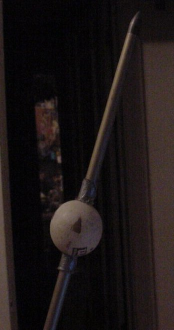

| Archery Links |
|
Archery Links
General infoLow Cost Arrow LubricantWant a quick, easy and inexpensive way to lubricate those arrows so you don't have to grunt and strain to pull those arrows out of the target? Buy a bar of Ivory hand soap (other types of soap don't do the job). Rub it on as much of the arrow as generally penetrates the target. This is a great low cost way to lubricate those arrows. It works as well as the specialty high priced archery products.Spine 'notes'25 grains of point weight=1" of shaft length=5#s of spine (shaft stiffness)Add 25 grains to your point weight or lengthen your shaft by 1" and you effectively reduce spine by one class or 5#s.You can also reverse this and add or increase spine to your shaft. However note that this is based on an average 125gr point, and 28" shaft.Arrow finishGreetings,As a worker of wood I can say that I use a mixture of equal parts of Tung oil, Boiled Linseed oil and Spirits of Gum Turpentine. Do not use Mineral Spirits as it will dry out the wood. You will need to wipe this mixture into the wood and let it soak it into the grain, you can even steel wool the wood between coats ( very gently ) to increase the smoothness of the coating. To help keep the shafts and bows slick you can use a Furniture polish that has Lemon Oil in it. Stay away from the waxy types especially if you are using this on a crossbow ramp as it will increase the drag. Lord Loric MacLoughlain Whistling Arrowheadsby Sir Jon Fitz-RaufI have found a method of making inexpensive whistling arrowheads. The latest issue of Primitive Archer magazine (vol.4, issue 3) had a letter from a reader with information on how to make them from ping-pong (table tennis) balls. After reading the letter, I purchased a pack of six for four dollars. You should use good quality balls and not the children's type, for they will not break as easily. They can break, but they do not shatter. They produce a loud clear whistle and are easy to make. You should first make the two holes for the shaft. These holes should be centered through the axis of the ball. Mark the center of the holes, and then use a field tip, mounted on a six-inch section of the diameter shaft you wish to use for the whistling arrowhead, to make the hole. This is done by heating the tip over the burner of a stove. Gently push the point of the tip into the ball till it is just short of its widest point. This will make a snug fit. To make the whistling holes you need to mark out four equally spaced triangles, 3/8 tall by 1/4 wide, base down. The base should be half way down from the top of the ball, pointing up. You now heat the X-acto knife and use it to melt the lines for the triangles. You should slide the head about four inches past the point of the arrow, so that it can clear whatever it hits. You may also want to use a longer shaft, so that you will still be at full draw when the ball touches your bow. Glue it in place, top and bottom. Fletchtite works well. If you make these up as flu flus, they will not travel as far and will be easier for you to find. If you make up a set of these and have several archers loose them simultaneously and at a high angle and you will have an Archer's salute. You must make sure, in advance, that the area where they will land is clear and safe. I have tried adding them to 1 1/4-inch head wood shaft combat blunts, mounting them about four inches below the head. They work, but are not as loud. This seems to be due to the turbulence caused by the large blunt. They do work quite well with 3/4 inch blunts. If you have any better success in adding them to combat blunts, please let me know. Do not use these in actual combat unless you have the approval of your kingdom marshal. I would also recommend taping the ball or coating it with tool dip.
Some pictures of one I have made: (please use your back button to return) | |
| Last update: |

